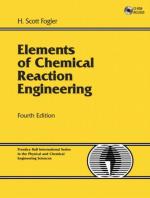|
This section contains 256 words (approx. 1 page at 300 words per page) |
Molecules of tetratomic elements contain four atoms. Elements are substances that cannot be chemically broken into two or more pure substances. Examples of elements include carbon, hydrogen, potassium, and fluorine. The smallest unit of a chemical element that has the properties of that element is called an atom. Atoms, in turn, combine with one another in infinite variation to produce the molecules of our universe. Many pure elements occur naturally as single atoms. For example, aluminum, helium, and sodium are monatomic elements, or elements whose atoms can exist alone, without forming molecules. Other elements only occur naturally as molecules made up of more than one atom of that same element chemically bonded together. For example, hydrogen is always found as a molecule in its elemental form (pure hydrogen). In other words, pure hydrogen gas never exists as single hydrogen atoms. Many elements ordinarily occur as diatomic molecules, or molecules consisting of two atoms chemically bonded. In addition to hydrogen, the elements nitrogen, oxygen, chlorine, iodine and bromine, all of which are gases at room temperature, also are diatomic. Oxygen, however, in addition to being diatomic can be found in a triatomic form called ozone. Fewer elements exist naturally as molecules consisting of four or more atoms. An example of a common and biologically important element that consists as molecules of four atoms chemically bonded together is the element phosphorus. Solid phosphorus usually occurs as a tetratomic molecule (tetra=four). Similarly, other elements are polyatomic. Crystalline sulfur, for example, occurs as molecules containing eight atoms.
|
This section contains 256 words (approx. 1 page at 300 words per page) |


